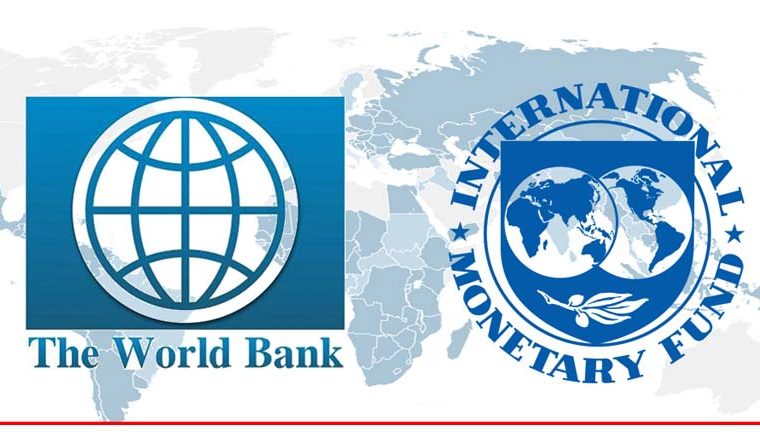
Almost every day, the International Monetary Fund (IMF), the World Bank, and the World Trade Organization (WTO) are mentioned in the financial press or on TV. These organisations make headlines all across the world, from loans to Greece to trade deals in Asia. Understanding these organisations and their aims will give you a better understanding of how they impact the global economy.
The International Monetary Fund (IMF) is a global institution established in Washington, D.C., with 190 member countries. Among other things, the fund’s goal is to foster financial stability and economic progress.
With 164 member countries, the World Trade Organization (WTO) is also a worldwide organisation. The goal of the organisation is to promote fair commerce between nations.
The World Bank is another multinational organisation whose mission is to alleviate poverty through financial aid.
The International Monetary Fund (IMF) is a multilateral financial institution based in Washington, D.C.
The IMF describes itself as “a 190-country institution dedicated to fostering global monetary cooperation, ensuring financial stability, facilitating international commerce, promoting high employment and long-term economic growth, and reducing poverty around the world.”
It was established as part of the Bretton Woods Agreement in 1944, while World War II was still raging. The agreement aimed to establish a monetary and exchange rate management system that would prevent a recurrence of the currency devaluations that contributed to the period’s economic difficulties.
The organization’s “principal goal is to maintain the international monetary system’s stability—the system of exchange rates and international payments that allows countries (and their residents) to deal with one another.”
The IMF’s broad, self-defined mandate includes “all macroeconomic and financial sector concerns affecting global stability,” such as trade promotion, economic growth, and poverty reduction.1 The IMF’s efforts are entirely self-financed by its members. The headquarters of the organisation is in Washington, D.C.
The mission of the IMF
The IMF accomplishes its goals in a variety of ways. A substantial part of the endeavour involves monitoring and reporting on economic changes, as well as offering suggestions to member countries on future courses of action. For example, in 2021, the IMF examined the status of the US economy and advised the Federal Reserve to postpone raising interest rates since it could affect the economy as it recovers from the COVID-19 epidemic. 6. The IMF’s recommendations are made public despite the fact that they are not legally binding. Economic officials are well aware of them, and they obviously have an impact on them.
The IMF is also working on a significant project to lend money to poor countries. The organisation gives financial assistance to struggling countries in order to help them avoid or recover from economic difficulties. Portugal, Greece, Ireland, Ukraine, Mexico, Poland, Columbia, and Morocco, among others, have received major IMF loans. 7
The World Bank has four branches.
- The World Bank Group, like the IMF, was established in 1944 at Bretton Woods.
- The organisation is self-funded and based in Washington, D.C. Its mission is to provide “financial and technical aid to underdeveloped countries worldwide” in order to “reduce poverty and boost development.” It is made up of five basic institutions, the first two of which are collectively referred to as “the World Bank.”
- The International Bank for Reconstruction and Development (IBRD) is a multilateral development bank that specialises in This is the lending arm of the World Bank. It assists credit-worthy, middle-income and low-income countries with financial aid.
- The Association for International Development (IDA). The International Development Association (IDA) provides loans and grants to developing countries.
The Multilateral Investment Guarantee Agency (MIGA) is a multilateral investment guarantee agency that aims to promote foreign direct investment (FDI) in underdeveloped countries. The International Centre for the Settlement of Investment Disputes (ICSID) is a non-profit organisation dedicated to resolving The International Centre for Settlement of Investment Disputes (ICSID) provides physical facilities and procedural expertise to assist in the resolution of inevitable disputes that arise when money is at the heart of a disagreement between two parties.
The mission of the World Bank is being advanced.
The World Bank achieves its goals by providing financial aid to poor countries. It funds “a wide range of initiatives in such sectors as education, health, public administration, infrastructure, financial and private sector growth, agriculture, and environmental and natural resource management” using low-or no-interest loans and grants. 15. In 2015, the World Bank gave India a $500 million loan to help micro, small, and medium-sized businesses. The 10-year loan had favourable terms, such as a five-year grace period before repayment began.16
In addition to working closely with the International Monetary Fund, the World Bank provides advice and support.
The World Trade Organization (WTO) has six members.
The World Trade Institution (WTO) bills itself as “the only worldwide international organisation dealing with international trade regulations.” The World Trade Organization’s activities are focused on developing trade agreements between countries to promote cross-border trade. This includes establishing agreements, interpreting agreements, and assisting in the resolution of disputes.
The World Trade Organization (WTO) was established in 1995, although its origins may be traced back to Bretton Woods, where the General Agreement on Trade and Tariffs (GATT) was drafted to encourage and support international trade. Following the GATT, the Uruguay Roundtable trade discussions from 1986 to 1994 resulted in the formal establishment of the World Trade Organization (WTO). 18. The World Trade Organization is headquartered in Geneva, Switzerland. The WTO, like the IMF and the World Bank, is financed by its members.
The mission of the World Trade Organization (WTO) is being advanced.
The World Trading Organization (WTO) aims to make cross-border trade easier. Negotiations follow an all-or-nothing approach, with each subject on the table being debated until it is resolved. As a result, there are no partial agreements, which means that missed deadlines and years-long initiatives are common. The WTO promotes trade dispute negotiations, such as a dispute between Mexico and the United States over tuna fishing, in addition to large-scale trade initiatives. 19



